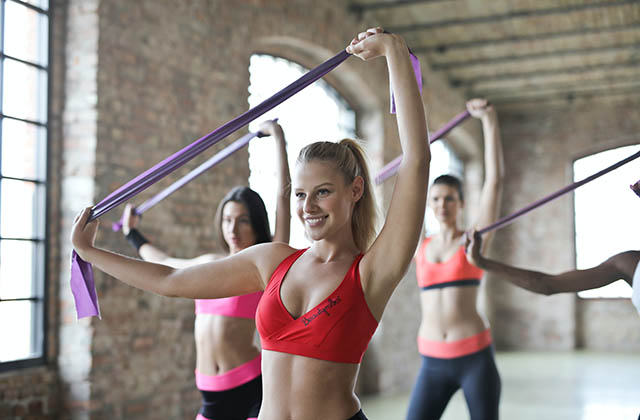Introduction
The new year has arrived, and you may be thinking about how to usher in a healthier lifestyle. If so, yoga or Pilates might be an option for getting into shape — but which one should you choose? Both forms of exercise offer similar benefits, but there are some subtle differences between them that can affect your body shape. In this post, we’ll discuss how each type of exercise works in order to help you decide whether it’s right for your goals and needs this year. Infra red sauna Northern Beaches could provide benefit either you are doing yoga or pilates exercise
If you’re looking at your fitness options for the new year, you may be wondering whether yoga or Pilates is the better choice for you. While both forms of exercise have many overlapping benefits, they are actually quite different from each other. So which one is best for you?
If you’re looking at your fitness options for the new year, you may be wondering whether yoga or Pilates is the better choice for you. While both forms of exercise have many overlapping benefits, they are actually quite different from each other. So which one is best for you?
Yoga and Pilates both have similar benefits: They can improve flexibility and balance, reduce stress levels and promote overall wellbeing. Both also strengthen your muscles—though in different ways—and are good for physical as well as mental health. In fact, according to a study conducted by researchers at the University of Oxford [1], people who practice yoga regularly tend to experience less depression than those who don’t do it at all!
However, there are several key differences between these two forms of exercise that should factor into your decision about which one is right for you:
Yoga is an ancient form of exercise that focuses on strength, flexibility and breathing to boost physical and mental wellbeing. The main components of yoga are postures (a series of movements designed to increase strength and flexibility) and breathing.
Yoga is an ancient form of exercise that focuses on strength, flexibility and breathing to boost physical and mental wellbeing. The main components of yoga are postures (a series of movements designed to increase strength and flexibility) and breathing.
Postures can help you to improve your posture, as well as prevent injury or pain in the long term. A good example of this is downward dog; it works your legs, back and shoulders while stretching out your hamstrings.
Breathing exercises are also important because they help you relax mentally during stressful situations in life or at work. Finally, yoga teaches us how to be present with ourselves – which is something we could all use more practice at doing!
Pilates is similar to yoga in that it also focuses on strength, flexibility and posture, but it takes a very different approach to mind-body connection. Whereas yoga uses the breath to draw the body and mind together, Pilates will have you focus intensely on your muscles during movements.
Pilates is similar to yoga in that it also focuses on strength, flexibility and posture, but it takes a very different approach to mind-body connection. Whereas yoga uses the breath to draw the body and mind together, Pilates will have you focus intensely on your muscles during movements.
It’s most commonly practiced at a private fitness studio or gym where you’ll typically be working one-on-one with a certified instructor or trainer who will give you personalized feedback about form and technique as well as set goals for improvement over time. The workout itself consists of a series of simple movements performed at low intensity for an extended period of time (usually between 10 and 20 minutes) that can improve posture by strengthening core muscles such as abs, back muscles and glutes. Because this type of exercise works the entire body from top to bottom, it makes an excellent complement or alternative workout when combined with other activities like running or cycling.
Although yoga and Pilates offer an array of similar benefits, there are some differences between them — primarily regarding their emphasis on mental clarity. Because yoga places a specific emphasis on breath as well as meditation (which are both core components of mindfulness), it has a stronger focus on the mind-body connection than Pilates does. That being said, Pilates can still help bring about a sense of mindfulness by using concentration exercises that require intense focus and awareness of your body.
Pilates is a strength-training exercise that focuses on the muscles, while yoga is more focused on flexibility and breathing.
Pilates uses concentric and eccentric muscle contractions (contracting the muscle and then lengthening it) to improve strength, range of motion, endurance, balance, body awareness and posture. Its movements consist of small controlled motions that increase blood flow throughout the body. Pilates also requires concentration and awareness of your body as you work out.
While many people find both Pilates and yoga to be beneficial in terms of increasing flexibility and decreasing stress levels (as well as improving overall health), there are some differences between them when it comes to mental clarity or mindfulness. Because yoga places a specific emphasis on breath as well as meditation (which are both core components of mindfulness), it has a stronger focus on the mind-body connection than Pilates does; however, both disciplines offer similar benefits regarding increased mobility & stability within your joints/spine while giving you an overall sense relaxation after each session ends.”
Beyond their subtle differences in how they connect the mind and body, there are also differences in what kind of shape your body will be in after practicing each form regularly:
Beyond their subtle differences in how they connect the mind and body, there are also differences in what kind of shape your body will be in after practicing each form regularly:
Pilates will help you build a strong core and maintain flexibility. You’ll feel physically stronger and more confident, but your muscles won’t necessarily have to work as hard as they would with yoga.
Yoga can help you build a strong core and maintain flexibility, too—but it also helps you develop focus and awareness through breath work (pranayama). This supple approach may leave you feeling less physically powerful than Pilates, but not at all weak or unfit!
Conclusion
There are plenty of similarities between the two forms of exercise, but their differences may be more important for you. For example, if your primary goal is to become more mindful (or if you want a low-impact way to work out), yoga may be the better choice for you. If you’re looking for something that will strengthen and tone your body from head to toe, Pilates might be a better option — but don’t worry! We can all benefit from both exercises in different ways. The important thing here is finding what works best for your needs and goals as an individual person who wants to live well with others!

